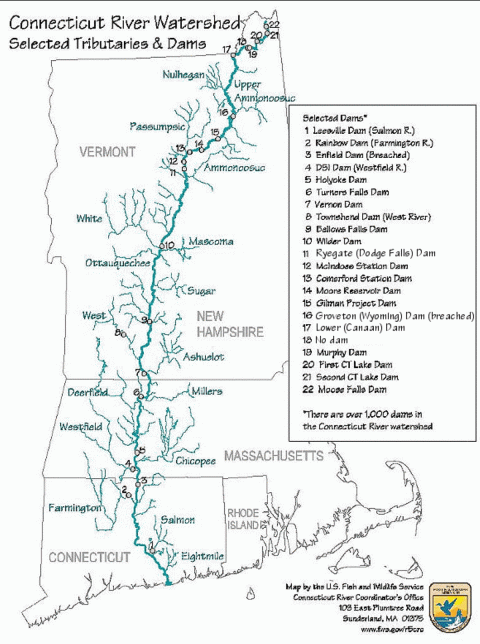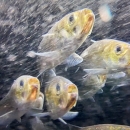About Us
The Connecticut River Fish and Wildlife Conservation Office is part of a network of field stations located throughout the nation that works to conserve fish and aquatic resources. Biologists from Alaska to the Florida Keys restore native species, protect imperiled species and their habitats, and monitor and control invasive species invasive species
An invasive species is any plant or animal that has spread or been introduced into a new area where they are, or could, cause harm to the environment, economy, or human, animal, or plant health. Their unwelcome presence can destroy ecosystems and cost millions of dollars.
Learn more about invasive species . We evaluate native fish stocks and provide recommendations to states, tribes, and international partners for sustaining native fisheries, including migratory fisheries. And we work with partners to restore habitat through programs such as the National Fish Passage Program and the National Fish Habitat Program.
Our Mission
Our mission is conserving and restoring healthy populations of native fish and other aquatic species, and protecting the lakes, rivers, wetlands and estuaries where they live. Our work provides valuable recreational and economic benefits to the American people, and restores the checks and balances important to the overall function and health of our lakes and rivers.
Our History
The Connecticut River is the longest river in New England, stretching over 400 miles from the Long Island Sound to the Canadian border. Over 142 species of fish, 14 of which are migratory, call the Connecticut River and its tributaries home.
The Connecticut River Fish and Wildlife Conservation Office protects, restores and helps manage migratory fish and their habitats in the Connecticut River basin. In particular, restoring river herring (blueback herring and alewife), American shad, American eel, Atlantic sturgeon and shortnose sturgeon are priorities, however, all migratory and resident aquatic species benefit from the work conducted by our office.
We work closely with the Atlantic States Marine Fisheries Commission and the Connecticut River Atlantic Salmon Commission to assess the status and health of migratory fish for the protection, restoration and management of these species.
We also work with dam-owners on relicensing hyrdroelectric projects to minimize impacts to the environment and migratory fishes; to improve access to historic spawning areas for migratory fish; and to help dam-owners comply with the Federal Energy Regulatory Commission’s environmental requirements.



